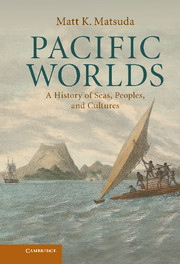Book contents
- Frontmatter
- Contents
- Illustrations
- Maps
- Acknowledgments
- Map
- Introduction: Encircling the ocean
- 1 Civilization without a center
- 2 Trading rings and tidal empires
- 3 Straits, sultans, and treasure fleets
- 4 Conquered colonies and Iberian ambitions
- 5 Island encounters and the Spanish lake
- 6 Sea changes and spice islands
- 7 Samurai, priests, and potentates
- 8 Pirates and raiders of the Eastern seas
- 9 Asia, America, and the age of the galleons
- 10 Navigators of Polynesia and paradise
- 11 Gods and sky piercers
- 12 Extremities of the Great Southern Continent
- 13 The world that Canton made
- 14 Flags, treaties, and gunboats
- 15 Migrations, plantations, and the people trade
- 16 Imperial destinies on foreign shores
- 17 Traditions of engagement and ethnography
- 18 War stories from the Pacific theater
- 19 Prophets and rebels of decolonization
- 20 Critical mass for the earth and ocean
- 21 Specters of memory, agents of development
- 22 Repairing legacies, claiming histories
- Afterword: World Heritage
- Notes
- Index
1 - Civilization without a center
Published online by Cambridge University Press: 05 June 2012
- Frontmatter
- Contents
- Illustrations
- Maps
- Acknowledgments
- Map
- Introduction: Encircling the ocean
- 1 Civilization without a center
- 2 Trading rings and tidal empires
- 3 Straits, sultans, and treasure fleets
- 4 Conquered colonies and Iberian ambitions
- 5 Island encounters and the Spanish lake
- 6 Sea changes and spice islands
- 7 Samurai, priests, and potentates
- 8 Pirates and raiders of the Eastern seas
- 9 Asia, America, and the age of the galleons
- 10 Navigators of Polynesia and paradise
- 11 Gods and sky piercers
- 12 Extremities of the Great Southern Continent
- 13 The world that Canton made
- 14 Flags, treaties, and gunboats
- 15 Migrations, plantations, and the people trade
- 16 Imperial destinies on foreign shores
- 17 Traditions of engagement and ethnography
- 18 War stories from the Pacific theater
- 19 Prophets and rebels of decolonization
- 20 Critical mass for the earth and ocean
- 21 Specters of memory, agents of development
- 22 Repairing legacies, claiming histories
- Afterword: World Heritage
- Notes
- Index
Summary
First they were sea peoples, they came in times that were legendary, passing along to the generations their tools, knowledge of islands, languages, and their tales. Many of these speak of ancestors. Keeping such histories is the work of their descendants. Some are inscribed in the Samoan poetry of Albert Wendt, tracing the bone flutes, the eel skins, and the sky-piercers of his voyaging grandfathers and -mothers. Others surface in archeological sites, where diggers of canoes and shell middens in the Solomon Islands or New Guinea unearth the remains of ancient settlements.
More are pieced together in research laboratories tracing microscopic seed germs and separating out the codings of amino acids from bone marrow. Many are carried along in daily lives where children study the knowledge of wayfinders under palm thatch in Palau, and prayers to the Goddess of the Seas rise along with burning incense from cluttered shrines along the coasts of East Asia and the Indonesian islands around Java. Where do these many Oceanian worlds begin? Tales and traditions from some cultures trace origins to migrations from a legendary homeland; others say that they have always been where they are, having come from the earth itself. Remarkably, histories abound in the Pacific in which both are true about the same peoples.
- Type
- Chapter
- Information
- Pacific WorldsA History of Seas, Peoples, and Cultures, pp. 9 - 22Publisher: Cambridge University PressPrint publication year: 2012
- 1
- Cited by



